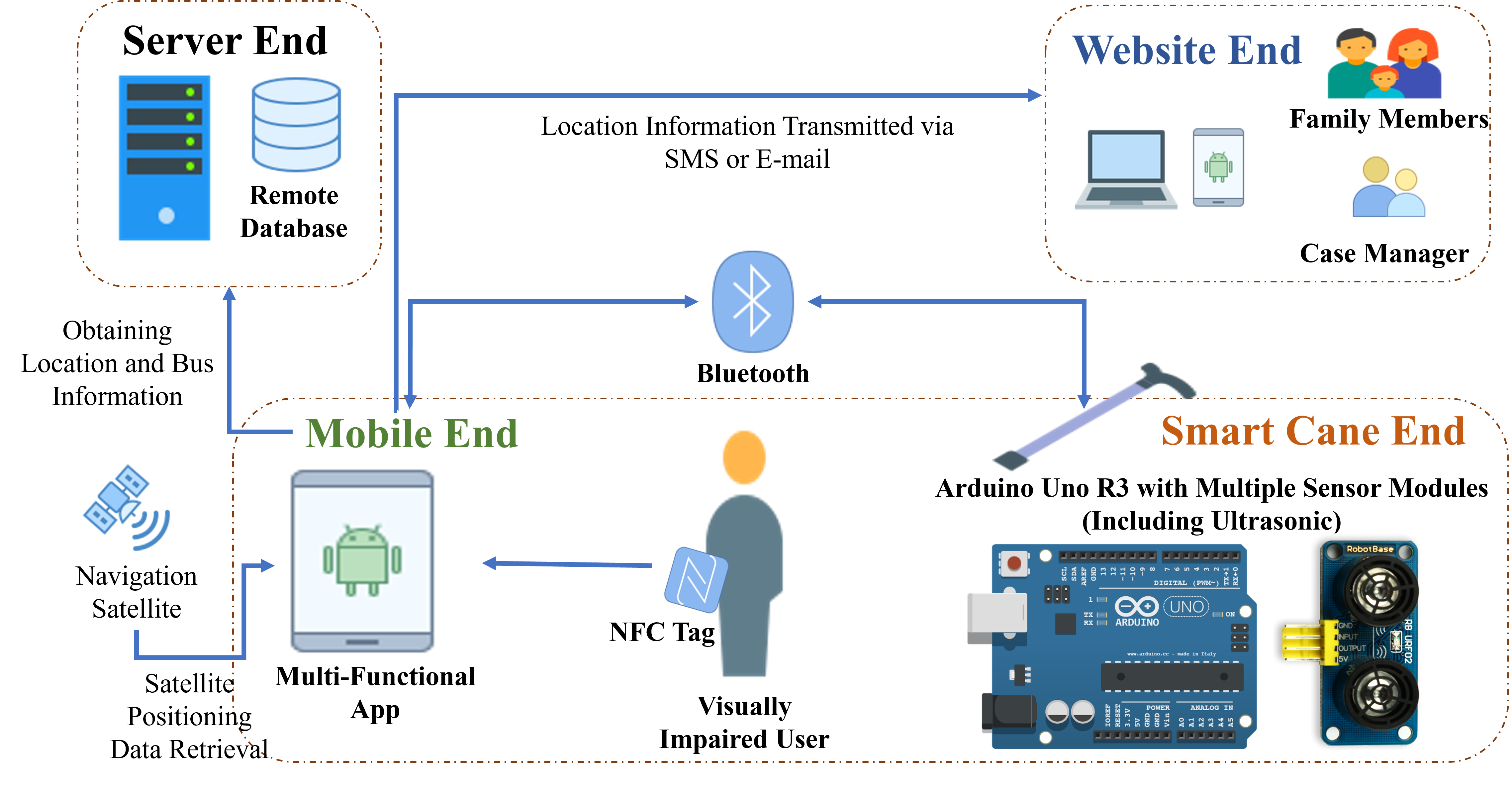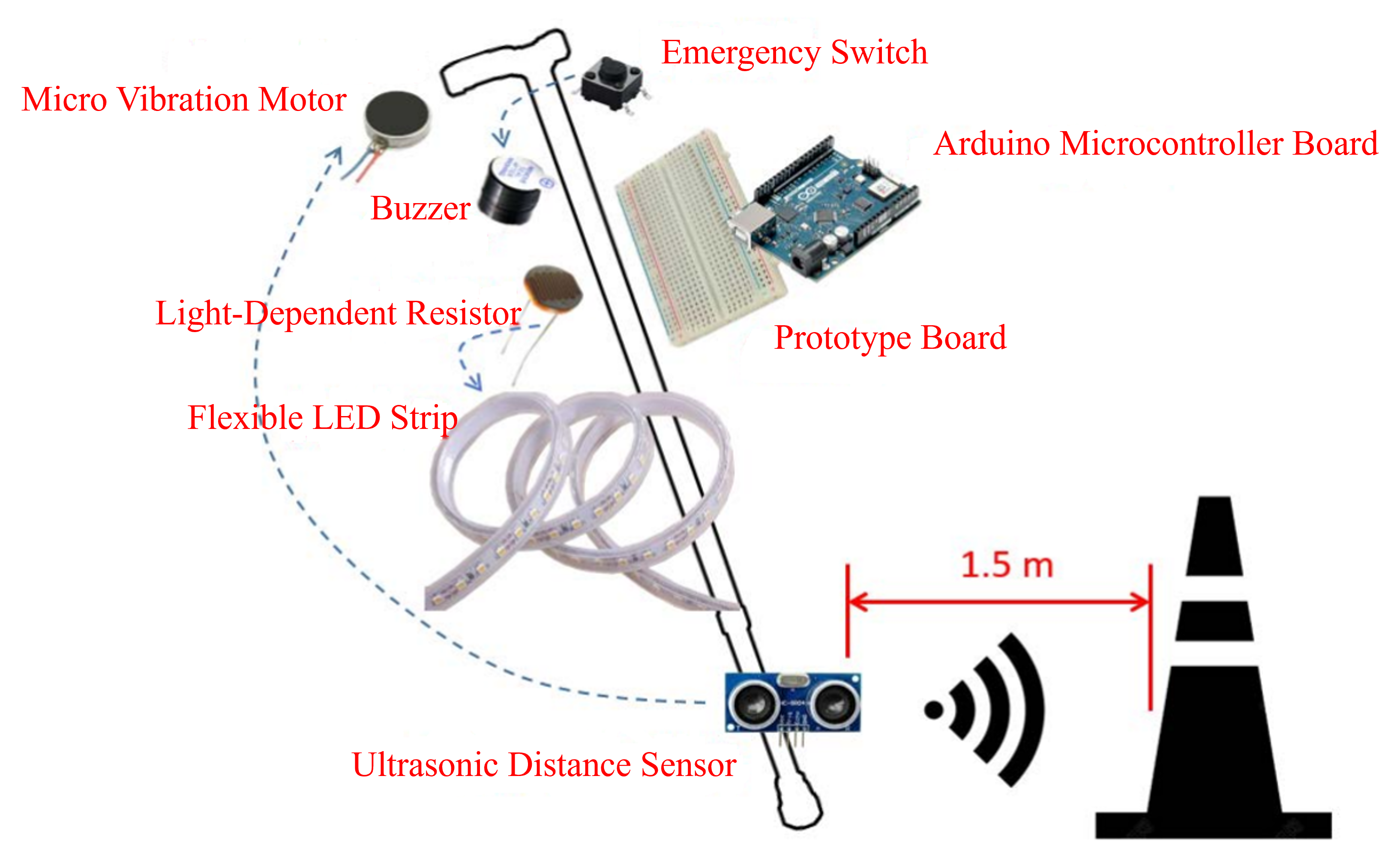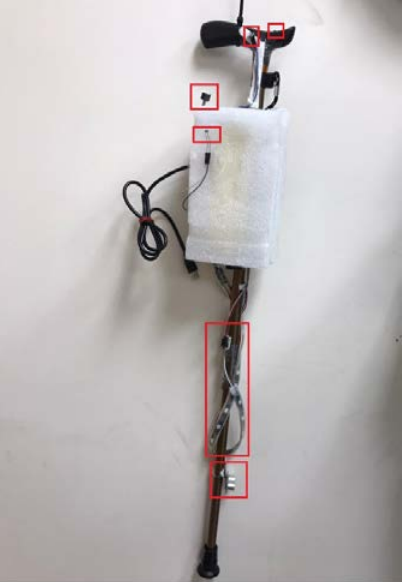A Smart White Cane Design Integrated with IoT Application
Objective
In Taiwan, a significant population of 56,039 individuals faces the daily challenges of visual impairment. These individuals encounter obstacles and difficulties in both indoor and outdoor settings. To address their needs, this study endeavors to integrate Internet of Things (IoT) sensors into a white cane, resulting in the creation of a smart white cane aimed at assisting people with visual impairment. This innovative device is further complemented by the integration of a mobile app program, thereby establishing a user-friendly IoT system designed to enhance the daily lives of visually impaired individuals.
Methods
The sensory component of the system involves the installation of an Arduino board equipped with various sensors within the white cane. These sensors encompass obstacle detection, ambient light sensing to illuminate dark environments, and an emergency response mechanism. Simultaneously, a mobile app was meticulously designed to offer features such as location tracking, bus stop announcements, and near-field communication (NFC) shortcuts. Furthermore, a web-based app was developed to cater to administrative and family management functions.
Results
This study has successfully developed a comprehensive IoT system tailored to the needs of visually impaired individuals. The white cane now integrates sensors for detecting obstacles and light conditions. The mobile app, linked to these sensors, offers vital warning capabilities, connects to an open database for bus arrival inquiries, and facilitates reporting. NFC shortcuts provide timely notifications, while data synchronization with the backend database ensures seamless functionality. A web-based app serves administrators and family members with pertinent information.
Conclusion
The culmination of this study effort is a fully realized IoT system, harmoniously merging the capabilities of a mobile app and a smart white cane. It encompasses five primary functions: emergency number dialing, location services, obstacle detection and distance measurement, timer notifications, and bus stop announcements. Additionally, the IoT system is seamlessly integrated with web-based platforms, providing comprehensive information and user management capabilities. This development holds the potential to enhance the safety and overall quality of life for individuals with visual impairments.
System Architecture


System Demonstration





